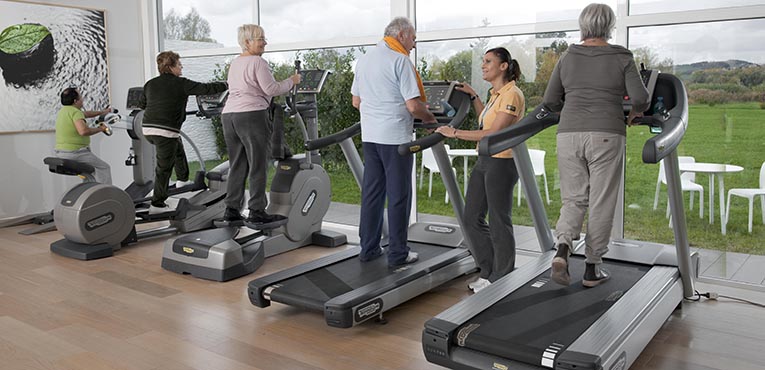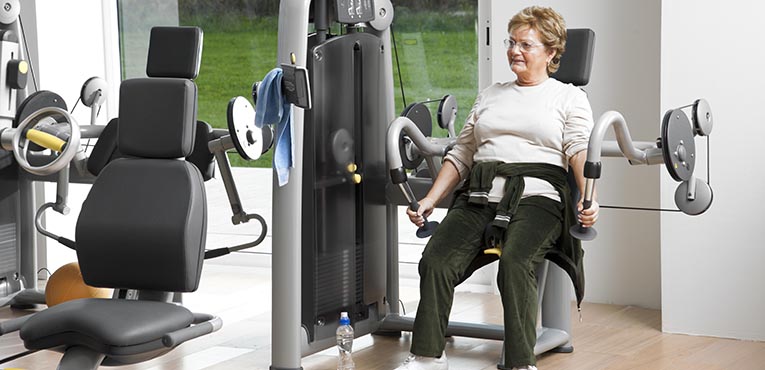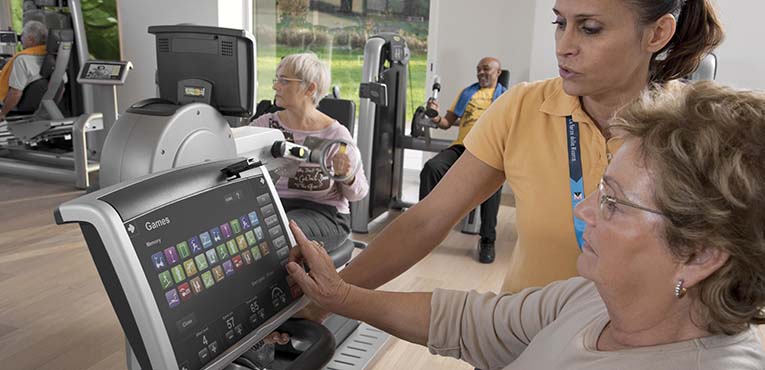Silvano Zanuso |
Jan.
18, 2019
The benefit of Big Data and how to use them

It is well known that physical inactivity is a major health problem that needs to be addressed in many parts of the world and across different demographics. Europe is not any different: the Eurobarometer report (1) showed that participation in sport has flatlined in the past years, with the only notable distinction of fitness and wellness facilities, which on average have shown a user increase.
The problem of physical inactivity is even more evident for elder demographics. As we age, our bodies take a little longer to repair themselves; moderate physical activity would keep our bodies fit and energetic, less prone to chronic conditions and diseases.
In fact, for most people, the benefits of exercising regularly far outweigh the risks.
Some of the benefits associated to a balanced physical exercise (2) routine are:
- Boosted Immune Function. A healthy, strong body fights off infection and disease more easily and more quickly.
- Better Respiratory and Cardiovascular Function. Frequent physical activity lowers the risk of heart disease and reduces blood pressure.
- Stronger Bones. Exercise protects against bone loss. Higher bone density reduces the risk of osteoporosis and lowers the risk of falls and broken bones.
- Improved Gastrointestinal Function. Regular exercise helps boost the metabolism, promotes the efficient elimination of waste and encourages digestive health.
- Protection Against Chronic Conditions. Physical activity lowers the risk of developing serious conditions and can actually minimize some symptoms after certain conditions have already developed.
However, trendy, rigorous exercise regimens that younger generations participate in simply are not safe or realistic for many seniors. Therefore, the question of establishing a safe and age-related workout regimen that elderly people can not only adopt, but stick to for a prolonged period of time, becomes of paramount importance.
Through the collection with dedicated systems and the use of Big Data, it is possible to extrapolate important results and establish a workout pattern, thereby testing if elderly gym users can actually follow a customized training regimen, thus making them physically active citizens.

The importance of the right workout schedule: the PAHA project
A European project named PAHA (Promoting Physical Activity and Health in Ageing) was designed and executed to test the effectiveness of physical exercise for the elderly within fitness and wellness facilities. The project interested 7 EU countries — Finland, Germany, Greece, Hungary, Ireland, Portugal and the United Kingdom — and by special arrangement, in three fitness centers in Denmark, where three trial sessions of supervised exercise of 6 weeks duration were run, with around 15 participants at each session.
Through a supervised and structured exercise program for senior citizens (55 to 65 years old), the aim of PAHA was to convert self-reportedly inactive people into regular exercisers at a level that was beneficial to their health, supporting the EU Guidelines on Physical Activity.
The 6-week program included a high level of prebooked fully supervised training sessions with fitness staff who had previously completed additional training in active ageing and behavioural change. The content and intensity of the scheduled training programs were gently increased over the six-week period, following the different workout outcomes of the different users. From the 669 people who took part in the project, 89 percent completed the full six weeks. Out of this number, 208 participants were tracked using Technogym Mywellness Key and had their data stored in the Technogym Mywellness Cloud database.
The end goal of this project was to establish a pattern between a training regimen fit for an elderly user and the continuation of said workout over time. In that regard, the project yielded remarkable results, especially in the case of tracked participants, who reported to have continued their physical activity routine three months after the project ended in 78 percent of the cases, thus establishing a positive motivational pattern between tracking results and continuing training.

How Big Data can change the wellness industry
The success of the project led Technogym to investigate further the role of Big Data in workout routines. When we decided to design this study we realized that there was limited data at the European level to investigate whether the volume and intensity of physical activity executed in health and wellness centers was compliant or exceeded the recommended level of physical activity suggested by international guidelines.
There were indeed some studies that reported the physical activity level of senior citizens, but these were based on self-reported data and on a limited number of subjects. Considering that Technogym has established a cloud-based technology than can automatically track the exercise executed by members using connected devices, this solution was utilized to overcome the well-known problems related to self-reported data.
Thus, using a “big data approach,” we conducted a baseline descriptive analysis of the “exercise behavior” on a large scale of a sample of European health and wellness centers.
Some interesting results at a glance
The results of the analysis came from data collected from a typical week of the past year, extracted from the Technogym MyWellness Cloud.
During the chosen week, clubs across 31 European countries automatically uploaded data on the wellness cloud through connected equipment. In the analysis, a total of 175,506 subjects were analyzed: 92,145 women and 83,361 men. The total number of analyzed training sessions was 349,568.
The average session/week attendance at the centre was 1.92 for women and 2.07 for men. The average intensity per session, expressed in Metabolic Equivalents, the ratio of the rate at which a person expends energy to the person's mass, while performing some specific physical activity, was 5.78 ± 1.82 for women and 6.01 ± 2.11 for men.
The average weekly duration expressed in minutes was 113.2 ± 81.2 for women and 124.2 ± 89.5 for men. Minutes accumulated during the exercise sessions were divided into Aerobic (women 32.6 ± 16.8; men 32.7 ± 18.3), Resistance (women 27.6 ± 16.9; men 32.1 ± 18.8), Flexibility (women 3.32 ± 3.26; men 3.38 ± 3.12) and Body Weight Exercises (women 22.8 ± 20.9; men 17.9 ± 17.0).
Let’s discuss the results
The results of this preliminary descriptive analysis show that in health and wellness centers both men and women far exceeded the World Health Organization minimum recommended dose of physical activity to be considered moderately active.
Both aerobic, resistance and body weight exercises were well represented in duration, whilst very little time was devoted to stretching.
Considering that this data refers to exercise accumulated only within facilities, European citizens joining either a health or a wellness center, and tracking their results, conduct a healthy lifestyle.
References
1. Special Eurobarometer 472: Sport and physical activity Report. December 2017. Directorate-General for Communication. March 2018.
2. American College of Sports Medicine, Chodzko-Zaijko WJ, Proctor DN, Fiatarone Singh MA, et al. American College of Sports Medicine position stand. Exercise and physical activity for older adults. Med Sci Sports Exerc. 2009 Jul;41(7):1510-30.
Author: 
Dr. Silvano Zanuso is Scientific Research & Communication Manager at Technogym and visiting professor at the University of Coventry (UK). Dr. Zanuso’s primary scientific and research interest is on the effects of physical activity and exercise in those with metabolic disorders, and he publishes regularly on this and other topics in recognized scientific and clinical journals. Dr. Zanuso has been a consultant for health promotion for different governments and public institutions, and he has held conferences and educational programs in more than twenty countries.